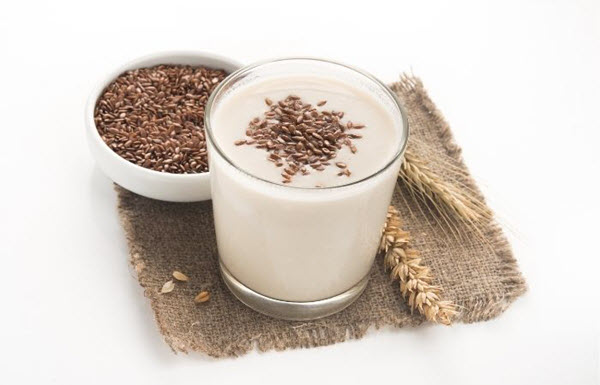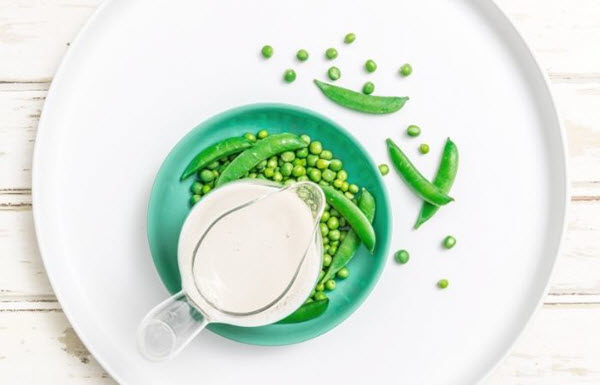There seem to be as many types of milk as there are letters in the alphabet these days, and two of the newer kinds are flax milk and pea milk. We’ll go over the pros and cons of each.
Flax Milk

According to Jenna Gorham, a registered dietitian, flax milk can be slightly sweet and thicker than other milk alternatives. It can come unsweetened and in different flavors.
Flax milk contains less protein than cow’s milk but it has more fiber. Most of the fat in flax milk is unsaturated, healthy fats.
In addition, flax milk is safe for everyone to drink (unless you’re allergic to flax seeds, of course).
Flax milk also contains just 50 calories, unlike whole milk which contains 150 calories. Flax milk has less sugar, too, but that’s usually added, so unsweetened flax milk is better. Flax milk can also contain more calcium, vitamin B12, and vitamin A than whole milk but might also contain more ingredients than whole milk like natural flavors, sea salt, gum, and more.
And, you don’t need to own a cow to make any of your own at home. You can make flax milk at home with flax seeds or flax oil and water. Allrecipes says you just blend flax seeds and water together a couple times, pour the mix through a nut bag or lined strainer, and then store it in the fridge.
By drinking homemade flax milk, you can get those beneficial nutrients like magnesium, fiber, and healthful fats without the additives.
One Green Planet author Caroline Lennon claims flax milk is also healthier for your heart because it doesn’t contain any cholesterol or lactose. Really, the only downside is the lack of fiber and maybe the taste, depending on your preferences.
Flax milk is high in omega-3 fatty acids, according to Food and Health. A deficiency of omega-3 fatty acids could cause rough, scaly skin, and dermatitis. Omega-3s could be involved in cardiovascular health, infant health, neurodevelopment, cancer prevention, Alzheimer’s disease, dementia, cognitive function, age-related macular degeneration, dry eye disease, rheumatoid arthritis, and others.
The Nutrition Source provides that omega-3 fatty acids are an essential fats, for they play an important role in cell membranes and their function, as well as other bodily processes.
Pea Milk

Pea milk certainly is one type of milk I’ve never heard of. And I have to be honest, I strongly dislike peas, so this does not sound appealing in the least. And no, I’m not five. I just really don’t like peas, the green kind (the black-eyed peas I’m okay with).
However, apparently pea milk doesn’t taste like peas. At least that’s what The Washington Post says. Reporter Maura Judkis says pea milk is better for the environment and more nutritious than other alternative milks.
Pea milk is also made differently than other plant milks. Peas are made into a flour that is processed to remove the pea protein. This is then blended with water and other ingredients.
As for its nutritional content, pea milk has less than 100 calories, 8 grams of protein, a high amount of calcium, and good amounts of vitamin D, protein, iron, and vitamin A. This can vary depending on the kind and brand.
According to Jillian Kubala, MS, RD, “peas are one of the best sources of plant-based protein you can eat.” She also claims that regularly consuming such protein can help regulate appetite and promote weight loss. Not to mention, pea protein contains branched-chain amino acids that encourage muscle growth and maintain blood sugar.
Kubala says pea milk is also creamier and richer than other plant-based milks. The best part? It’s dairy-free and hypoallergenic! Plus, unsweetened versions are low in calories and carbs and contain zero sugar.
Takeaways
If you’re up for trying something new, try dabbling in different milks, particularly the newer flax and pea milk. They each come with their own benefits and you might find you like their unique tastes and textures. While flax milk provides some extra fiber, healthy fats, and other minerals to your diet, pea milk can help both you and the environment by being an excellent source of protein and other nutrients.




